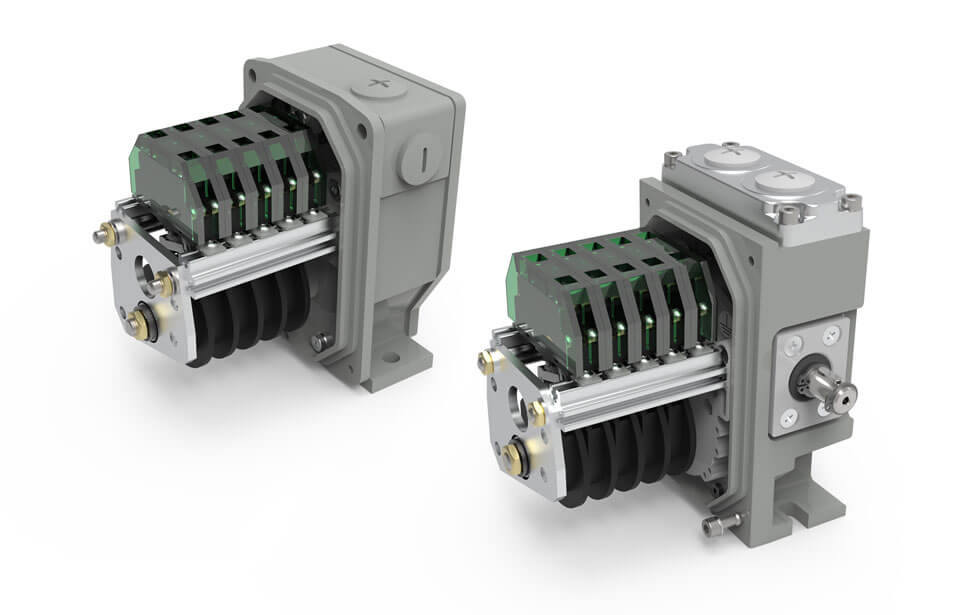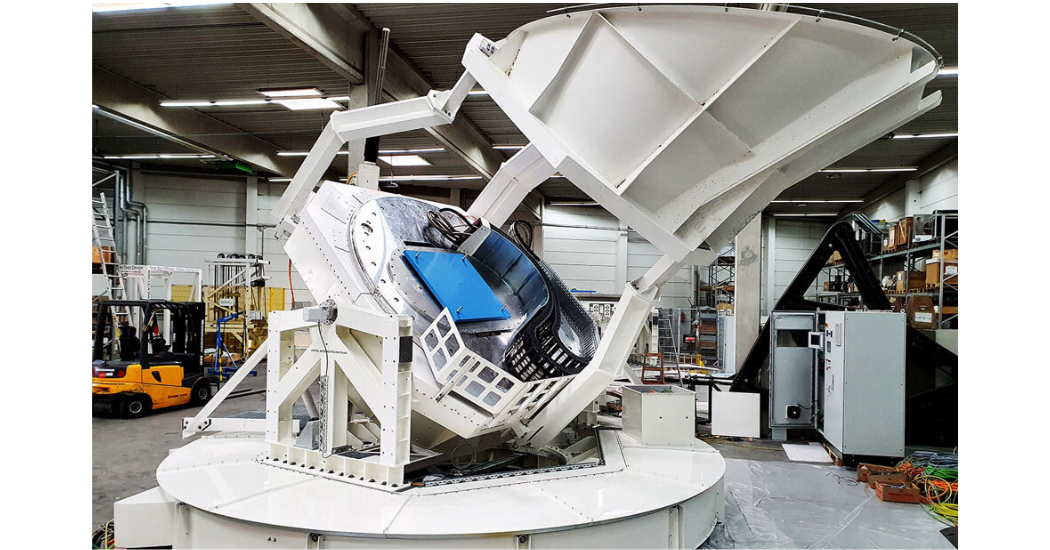High in the arid Atacama Desert, a new observatory is aiming to answer big questions about our universe. Currently under construction, the Simons Observatory will study the cosmic microwave background (CMB) – the radiation signature of the Big Bang. The observatory will include telescopes and antennas manufactured by CPI VERTEX ANTENNENTECHNIK GmbH, which feature Stromag Series HGE and HEG Geared Cam Limit Switches to limit their movements as they observe deep space.
CPI VERTEX ANTENNENTECHNIK GmbH is a worldwide supplier for ground stations, precision antenna systems and radio telescopes. An expert in this field, the business provides systems to space agencies and leading academic research projects.
To infinity, and beyond
Telescopes and antennas around the world are constantly scanning the night sky, observing across the electromagnetic spectrum as part of ground-breaking research into the nature of our universe. While the first telescopes relied solely on visible light, now observatories can detect radio and microwaves. An area that has spurred intense research is the CMB, a remnant of the Big Bang. Highly sensitive telescopes and antennas located far from sources of electromagnetic interference (EMI) observe deep space at this spectrum to research the creation, expansion and composition of our universe.
As the Earth rotates, telescopes and antennas must move axially and elevate to keep aligned with a particular observed section of the sky. In addition, in some cases the dishes and receivers must be rotated to ensure accurate reception of signals from space. The rotating ranges of the telescopes are limited because of cabling, cooling hoses and mechanical constraints, which is where Stromag Geared Cam Limit Switches come in.
 Stromag HGE and HEG Limit Switches
Stromag HGE and HEG Limit Switches
Series HGE and HEG Geared Cam Limit Switches were supplied for this project which limit the axial, elevation and polarisation movements of the telescopes and antenna.
The outer limit
Marco Niehnus, Global Product Manager Controls at Stromag, explains: “We are a global manufacturer of power transmission solutions and a leading brand of Altra Industrial Motion Corp. At our facility in Unna, Germany, we manufacture a wide range of geared cam limit switches, which are designed to provide slowing and stopping functionality at pre-set limits. Typically, these devices are used on cranes to limit the movement of loads, but one of our customers, CPI VERTEX ANTENNENTECHNIK GmbH, uses our products on its telescopes and antenna for space research.”
CPI VERTEX ANTENNENTECHNIK GmbH is a worldwide supplier for ground stations, precision antenna systems and radio telescopes. An expert in this field, the business provides systems to space agencies and leading academic research projects. Located in Duisburg, Germany, CPI VERTEX ANTENNENTECHNIK GmbH utilises Stromag Geared Cam Limit Switches to protect the highly sensitive equipment from damage in case of malfunction, for example, after component failures. Thus, the Stromag Geared Cam Limit Switches are important elements within the telescopes.
“We work closely with the design and engineering teams at CPI VERTEX ANTENNENTECHNIK GmbH to help specify limit switches on a project-by-project basis,” Marco continues. “Typically limit switches are required to limit the axial rotation, the elevation and the polarisation movements of the system. As part of this technical relationship, CPI VERTEX ANTENNENTECHNIK GmbH contacted us to provide limit switches for equipment destined for a new observatory being built in Chile.”
He who controls the scope
The Simons Observatory is being constructed at 5,200 meters (17,000 ft) inside the Chajnantor Science Preserve, making it one of the highest telescope installations the world. It will join the operational Atacama Cosmology Telescope (ACT) and the Simons Array to aid in the next generation of CMB research, adding several new telescopes1 and cameras with state-of-the-art detector arrays. The observatory is operated and funded by the Simons Foundation, which includes the University of Pennsylvania; Princeton University; the University of California, San Diego; the University of California, Berkeley; and the Lawrence Berkeley National Laboratory, as well as other institutions worldwide2.
“To support the project, we provided Series HGE and HEG Geared Cam Limit Switches. These limit the axial, elevation and polarisation movements of the telescopes and antenna. Devices offer two contact points at both the upper and lower (or left and right) limits, the first for initially slowing the movement and the second for a complete stop. We design each geared cam limit switch to offer a certain number of turns from the upper to the lower limit, which we tailor by modifying the gear ratio. We can offer a switching point repeatability to 1/1000th of the travel pass, which for 20 m of travel would equate to 20 mm accuracy of limit switch adjustment. This level of accuracy is highly beneficial for sensitive equipment collecting scientific data like a telescope or antenna,” Marco says.
Stromag geared cam limit switches can be adjusted by almost anyone. By adjusting a worm gear, operators can set the limit as desired. The worm gear is self-locking, which ensures that once set, there will be no subsequent change in position. Encoder integration is also available to provide the information to the control systems regarding the current position in between the contacts. The contacts are responsible for the safe stopping of the antenna at the end of its travel range.
Galactic alliance
“Our proximity to CPI VERTEX ANTENNENTECHNIK GmbH means that, when possible, we can talk directly with their teams to ascertain specifications and requirements. For challenging applications such as antennas and telescopes, this is invaluable. We can take an active part in each project during initial design phase from a limit switch perspective, which helps us to deliver the best possible solution,” Marco enthuses.
Construction of the Simons Observatory started on June 30th 2019, so it will not be long until its 5-year journey of discovery into the CMB and our Universe begins3. With astrophysicists at the observatory looking explore the physics of the early universe, dark energy, neutrinos and gravity4 – one of the few boundaries of its research will be movement limits set on its array of telescopes and antenna.
Visit STROGAM.COM
Sources: 1: https://simonsobservatory.org/large-aperture-telescope/et https://simonsobservatory.org/small-aperture-telescopes/ pour plus d’informations sur les télescopes 2: https://simonsobservatory.org/ 3+4: https://www.princeton.edu/news/2019/07/10/simons-foundation-commits-20-million-quest-understand-universes-beginning




